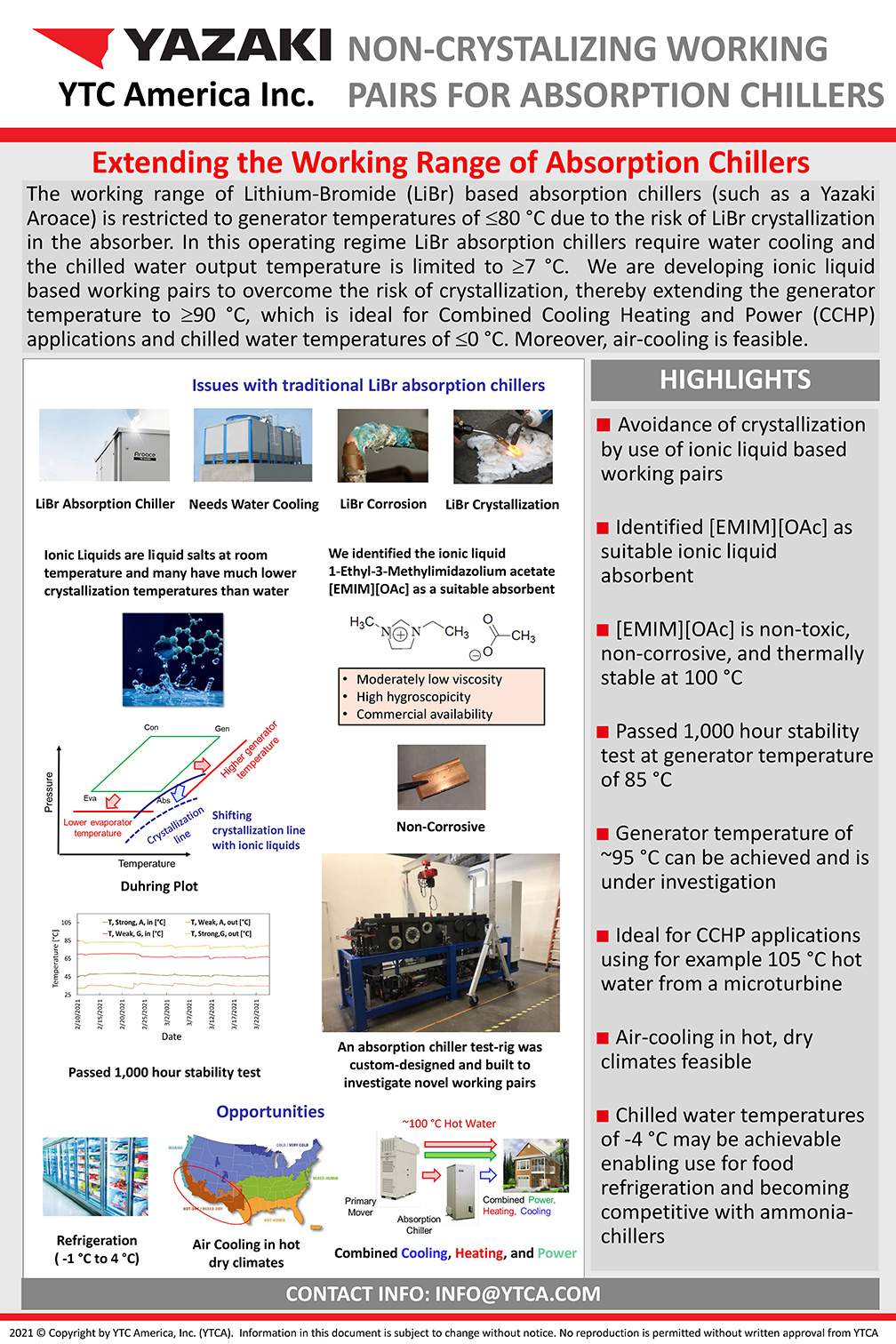Non-crystallizing Working Pairs for Absorption Chillers


Non-crystallizing Working Pairs for Absorption Chillers

Extending the Working Range of Absorption Chillers
The working range of Lithium-Bromide (LiBr) based absorption chillers (such as a Yazaki Aroace) is restricted to generator temperatures of 80 °C due to the risk of LiBr crystallization in the absorber. In this operating regime LiBr absorption chillers require water cooling and the chilled water output temperature is limited to 7 °C. We are developing ionic liquid based working pairs to overcome the risk of crystallization, thereby extending the generator temperature to 90 °C, which is ideal for Combined Cooling Heating and Power (CCHP) applications and chilled water temperatures of 0 °C. Moreover, air-cooling is feasible.
- Avoidance of crystallization by use of ionic liquid based working pairs
- Identified [EMIM][OAc] as suitable ionic liquid absorbent
- [EMIM][OAc] is non-toxic, non-corrosive, and thermally stable at 100 °C
- Passed 1,000 hour stability test at generator temperature of 85 °C
- Generator temperature of ~95 °C can be achieved and is under investigation
- Ideal for CCHP applications using for example 105 °C hot water from a microturbine
- Air-cooling in hot, dry climates feasible
- Chilled water temperatures of -4 °C may be achievable enabling use for food refrigeration and becoming competitive with ammonia-chillers
Extending the Working Range of Absorption Chillers
The working range of Lithium-Bromide (LiBr) based absorption chillers (such as a Yazaki Aroace) is restricted to generator temperatures of 80 °C due to the risk of LiBr crystallization in the absorber. In this operating regime LiBr absorption chillers require water cooling and the chilled water output temperature is limited to 7 °C. We are developing ionic liquid based working pairs to overcome the risk of crystallization, thereby extending the generator temperature to 90 °C, which is ideal for Combined Cooling Heating and Power (CCHP) applications and chilled water temperatures of 0 °C. Moreover, air-cooling is feasible.
- Avoidance of crystallization by use of ionic liquid based working pairs
- Identified [EMIM][OAc] as suitable ionic liquid absorbent
- [EMIM][OAc] is non-toxic, non-corrosive, and thermally stable at 100 °C
- Passed 1,000 hour stability test at generator temperature of 85 °C
- Generator temperature of ~95 °C can be achieved and is under investigation
- Ideal for CCHP applications using for example 105 °C hot water from a microturbine
- Air-cooling in hot, dry climates feasible
- Chilled water temperatures of -4 °C may be achievable enabling use for food refrigeration and becoming competitive with ammonia-chillers
